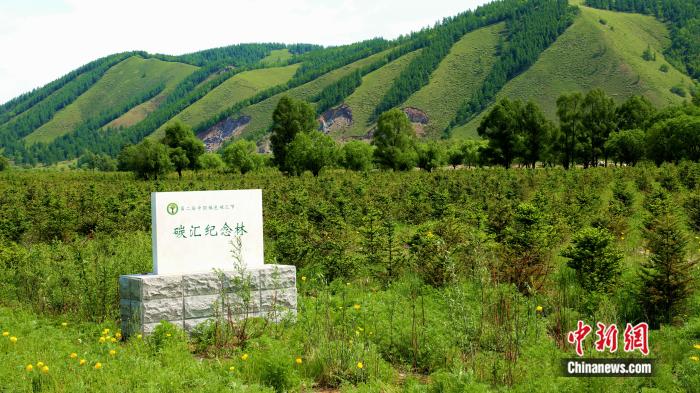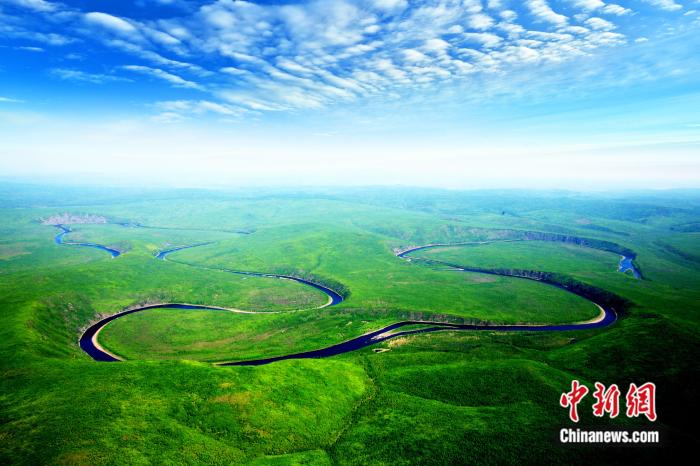North China's Inner Mongolia sees thriving carbon sink trade
The Greater Khingan Mountains in north China's Inner Mongolia Autonomous Region, covering an ecological function area of 106,700 square kilometers, has witnessed the carbon sink trade become a new driving force for the local economy.
In the first quarter of 2021, a total of 260,000 tons of carbon sink production from the Greater Khingan Carbon Sink Technology Co. of the Inner Mongolia Forest Industry Group, which was filed in the Verified Carbon Standard (VCS) Program, the world's most widely used voluntary greenhouse gas program, went on sale at Inner Mongolia Environment Energy Exchange, with an expected sales volume of about 3 million yuan ($459,300), according to the performance report published by company in the autonomous region.

Photo shows a carbon sink memorial forest in the Greater Khingan Mountains, north China's Inner Mongolia Autonomous Region. (Photo/Inner Mongolia Forest Industry Group)
In order to further raise carbon sink production, the company disclosed that it is working on five projects aimed at planting 2,900 hectares of trees and increasing the volume of the forest carbon sink by improving the quality of 5,200 hectares of forests. Moreover, three VCS projects invested in and developed by the company, each covering an area of about 66,667 hectares, are expected to be completed within the year.
Over the past seven years, six forestry bureaus in the forest areas of the Greater Khingan Mountains have joined the forest carbon sink program. All together, they carried out nine carbon sink forestry development and reserve projects that have met both national and international standards. With a total area of 156,000 hectares, the projects are expected to yield a total carbon sink production of over 48 million tons of carbon dioxide equivalent.

Aerial photo shows the natural forests in the north of the Greater Khingan Mountains, north China's Inner Mongolia Autonomous Region. (Photo/Inner Mongolia Forest Industry Group)
The Genhe Forestry Bureau is one of the six forestry bureaus taking part in the program. In 2016, a carbon sink afforestation project under the Chinese Certified Emissions Reduction Standard was initiated by the Genhe Forestry Bureau after receiving approval via China's National Development and Reform Commission. Over the past four years or so, a total of 12,000 hectares of forests have been planted during the project’s lifetime in the forested areas administered by the bureau.
"The carbon sink produced by the forests can be traded after the growth of the trees is checked and verified by a third party, who also calculates the amount of carbon dioxide expected to be absorbed and the amount of oxygen to be released according to a certain standard," said Pang Hongbin, deputy chief of the forest management department at the Genhe Forestry Bureau.
Photos
Copyright © 2021 People's Daily Online. All Rights Reserved.










